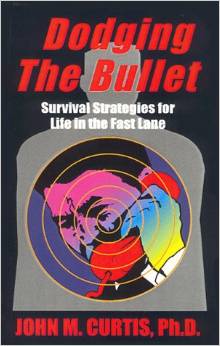Putting North Korea’s 33-year-old dictator Kim Jong-un on notice, 71-year-old President Donald Trump said Friday that the era of “strategic patience” is over. Raising the stakes on the Korean Peninsula, Trump told a Rose Garden press conference with South Korean President Moon Jae-in that the U.S. can’t sit idly by while North Korea develops an Intercontinental Ballistic Missile [ICBM] with a nuclear warhead. North Korea has repeatedly threatened the U.S. with nuclear war, something prompting Trump to change U.S. policy of “strategic patience.” “The era of strategic patience with the North Korean regime has failed. Many years, and it’s failed. And, frankly, that patience is over,” drawing his own red line on dealing with North Korea. If North Korea detonates another nuclear device, it could trigger a massive U.S. military response, something unnerving South Korea.
Sitting only 35 miles south of the demilitarized zone on the 38th parallel, South Korea cringes at the prospects of war with its Stalinist neighbor. Working feverishly since the end of the Korean War July 27, 1953, South Korean has worked itself into the 11th ranked world economy, just behind Canada at $1.411 trillion. North Korean likes to put on Nazi-like goose-stepping demonstrations in Pyongyang’s Kim Il-Sung’s Square. While North Korea boasts of a 1.2 million man-woman army, Kim blows a lot of smoke, threatening the U.S. with nuclear war. Unlike former President Barack Obama, Trump’s no longer in a position to ignore Kim’s nuclear and ballistic missile program, now posing an existential threat to the U.S. With Kim’s stated intent of launching nuclear war against the U.S., there’s no more room for Trump and his Defense Secretary James “Mad Dog” Mattis to ignore the threat.
Trump’s put pressure on Chinese President Xi Jinping to pressure North Korea into abandoning its nuclear and ballistic missile program. Secretary of State Rex Tillerson and Mattis have already notified Kim that the end of “strategic patience” has arrived. Mattis called North Korea a “clear and present danger,” language used in U.S. national security to designate the military option. Meeting with world leaders at the G20 Summit in Berlin July 7,8, Trump hopes to do business on the sidelines, especially meeting with Russian President Vladimir Putin. After accused of colluding with Putin to win the 2016 election, Trump faces opposition from Democrats and Republicans to normalize relations. Trump hopes to meet with Moon, Putin, Japanese President Shinzo Abe and Chinese President Xi Jinping. Trump hopes to get cooperation on North Korea, especially from Putin.
Much has changed from the days when Soviet Premier Joseph Stalin and Chinese Chairman Mao Zedong backed North Korea in their fight against the U.S. and South Korea. While Russia and China continue to trade with North Korea, they’re in no position to back the hermit nation in any confrontation against the U.S. “The United States calls on other regional powers and all responsible nations to join us in implementing sanctions and demanding that the North Korean regime chose a better path and do it quickly, and a different future for its long suffering people,” said Trump on Friday. Trump telegraphs to Beijing and Moscow that more must be done to rein in North Korea’s nuclear and ballistic missile program. “Our goal is peace, stability and prosperity for region. But the United State will always defend itself—always will defend itself. And will always defend our allies.”
Battling Russian hysteria on Capitol Hill, Trump faces an uphill battle trying to rr-set relations with Moscow, something he promised to do in the 2016 campaign. If Trump can bring Putin onboard to rein in Kim Jong-un, he will have pulled off a foreign policy coup. Members of Congress railing against Russian don’t understand the concept of linkage, essential today, more than ever, in dealing with foreign adversaries. Getting Putin to apply leverage on Kim would go a long way to create regional stability, something badly missing over the last 20 years. Beijing doesn’t want to deal with a collapse of North Korea, especially when it comes to reconciling with South Korea, considered a close U.S. ally. China wants a stable North Korea but knows Kim has crossed the line threatening the U.S. with nuclear war. With or without China and Russia, Trump must act to protect U.S. national security.
Declaring that the end of “strategic patience” is over, Trump told Pyongyang to prepare for possible U.S. military action if Kim continues to pursue A-bombs and ballistic missiles. Moscow and Beijing can only do so much to convince Kim that his long-term stability is best served by giving up his nuclear and ballistic missile programs. Kim still believes in Mutual Assured Destruction [MAD], prompting Pyongyang to feverishly pursue nuclear bombs and ballistic missiles. If Kim detonates another A-bomb, Trump’s already committed himself to military action. Unlike the pinprick Cruise Missile strike at an airfield in Syria, Trump will have to unload the U.S. arsenal in Pyongyang. Any response in North Korea would have to neutralize Kim’s military, preventing Kim’s army from retaliating in South Korea. With U.S. options narrowing, Trump only hopes Kim got the message.



